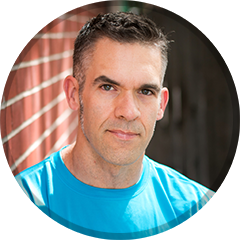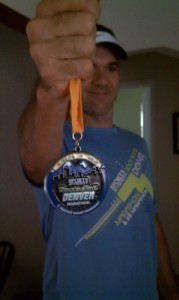I’m behind on posting and I’m trying to catch up. There’s been a lot of interesting information to read in various publications. If you’re a runner (and probably any other sort of endurance athlete) you definitely need to see some of this. If you’re listening to government guidelines on saturated fat, then definitely look at the last article.
Beet juice for endurance
A number of articles have appeared lately about beet juice and its benefits for endurance athletes. Never miss a beet is from Outside Magazine. The article discusses two studies from Exeter University in England that demonstrated performance benefits for cyclists. Here are the important details. (Emphasis added is mine.):
… In 2009, a small study done at England’s Exeter University caught the attention of the fitness world. Researchers discovered that competitive cyclists who drank half a liter (about 16 ounces) of beet juice right before they got on their bikes were able to ride 16 percent longer—a massive gain in a sport where only a few percentage points of improvement can be the difference between first place and fifteenth.
Last June, a larger Exeter study backed up this rather unusual protocol: cyclists who drank half a liter of beet juice for six days were 11 seconds faster over a 2.5-mile course and 45 seconds faster over a 10-mile course. The reason: more oxygen was getting to the athletes’ muscles, thanks to molecules in the juice called nitrates. “The oxygen cost of exercising at a given speed is basically fixed,” says Andrew Jones, a professor of applied physiology at Exeter and lead author of both studies. “Only nitrate ingestion appears to improve efficiency. These effects cannot be achieved by any other known means, including training.”
It works like this: Our bodies convert nitrates into nitric oxide, a gas that causes blood vessels to relax and widen, by a process known as vasodilation. This allows more oxygen-rich blood to flow through the body—and the more oxygen reaches the muscles, the longer they’re able to perform at high intensity. Athletes have tried to trigger vasodilation with various banned substances, including hypertension drugs and erectile-dysfunction medication, for years. It now appears that simply consuming large amounts of vegetables that are high in nitrates, such as spinach, carrots, radishes, and beets—the last of which pack the biggest punch, a whopping 310 grams per 16 ounces of juice—can offer the same performance boost.
The article also discusses beta-alanine supplementation. I haven’t used beta-alanine but recently I have been playing around with eating and juicing beets. (I don’t juice a whole beet. I combine about ¼ beet with other fruits and vegetables.) I pretty much will never say that one thing causes one other thing, but since I’ve been consuming more beets, my workouts have felt really good. Also, getting up early has been easier. Again, I can’t say this is the only factor but I see no reason not to continue gobbling a few beets through the week.
One odd thing about beets is that they color some of your bodily excretions, meaning you may see a red tint in the toilet soon after eating or drinking beet juice. It was kind of alarming the first time I noticed it. Turns out it’s normal. Despite this weird side effect, I’m giving beets a thumbs-up.
Evolution, distance running, and a controversial title for an article
Other articles have discussed the idea that human evolution and distance running are intimately intertwined. A recent article from Slate Magazine suggests the same thing. If nothing else, All men can’t jump: Why nearly every sport except long-distance running is fundamentally absurd sounds like fun reading. From our Achilles tendons, to our teeth, brains, our ability to dissipate heat , gait mechanics, and even the “runner’s high,” the article suggests that we are uniquely and powerfully suited to “persistence hunting,” that is chasing down prey until it’s tired. I think it’s an interesting theory, though I wonder if some day scientists will ruminate over the connection between our thumbs, evolution, and video games or text messaging.
Overhydration
It’s summer. It’s hot. We still run, bike, hike, walk, etc. How much should we drink? How often? Do we need to weigh ourselves before and after exercise? Does dehydration lead directly to heatstroke? Furthermore, have you ever heard of hyponatremia, or what happens to you when you drink too much water. (FYI, drinking too much can be far more deadly than being dehydrated.)
The issue of hydration is a pendulum that still swings around and there is confusion. Many of us are growing gills for the amount of water we’re drinking, but this high consumption of water throughout the day seems a fairly recent thing. Do we really need all this consumption? How did we manage before plastic bottles? (Watch an episode of Mad Men and you’ll see the only water anyone drank came from melted ice cubes in their cocktail. How’d we get out of the 1950s under those circumstances?)
For more information, read the Outside Magazine article Tim Noakes on the serious problem of overhydration in endurance sports. (Why listen to Dr. Noakes? He’s a leading exercise scientist and he’s just recently written a 439-page book called Waterlogged: The Serious Problem of Overhydration in Endurance Sports. He’s a very well informed guy. All runners should read his superb book Lore of Running.)
The article covers some interesting information including how hunter/gatherers run a lot during a hunt but don’t drink until they’ve caught their prey, the history and marketing of sports drinks, and why a bit of dehydration is nothing to fear.
Here’s some background on why we think we need to drink so much when exercising. (Emphasis is mine.):
When did we start drinking more water?
Well, the sports drink industry was involved. In 1969 a great American physiologist, David Costill, started new studies. Gatorade was just getting into the market, and he went to them and said, Listen, you produce this product, do you know if it works? Is it of any value? He said, I’ll do the studies and let’s see if it works. His focus was to try and raise money to fund his laboratory. He did the first study where he had people like Amby Burfoot—who writes the foreword for the book and won the 1968 Boston Marathon—not drinking anything. Costill had them run when they drank up to 1.2 liters per hour on the treadmill, and [then run] when they didn’t drink. When they did drink, he showed their body temperatures were much lower and he presumed that was better. But if you ask Amby Burfoot, he said he felt much better when he ran without drinking. Costill assumed then that drinking was good for you, although the study hadn’t really shown that because it wasn’t a performance trial, and all the runners found when they didn’t drink was that there were no problems associated with not drinking. The American College of Sports Medicine asked David Costill to write the first drinking guidelines, which he did in 1975. He said that runners should drink regularly during exercise, which is pretty good advice.
Then, what I discovered, which was really eye-opening, was that a single individual working for the U.S. military decided that water was a tactical weapon. That if the military could be encouraged to drink more during maneuvers, they’d have less heat stroke and less illness and they’d be more productive and could be better soldiers. It was purely his idea. It had no scientific basis at all. Two years later he published a paper supposedly saying that if the US soldiers drank 1.9 liters per hour [64 ounces] when they were exercising in the heat they would perform much better. There was utterly no concrete evidence that that was true. The problem was, his advice was embraced by the U.S. Military. They changed their drinking guidelines to say that you should now drink 1.9 liters per hour. The same people who drew up those guidelines were then invited by the American College of Sports Medicine to get involved with drawing up guidelines for runners.
The essential information first and foremost 1) let thirst be your guide, 2) over drinking is bad, and 3) anything short of severe dehydration won’t kill you.
Evidence on saturated fat and cardiovascular disease
Finally, I’ve mentioned before that perhaps we shouldn’t be as afraid of fat–particularly saturated fat–to the degree that we’ve been told. We’ve got a little more evidence in that direction. Saturated fat and cardiovascular disease: the discrepancy between the scientific literature and dietary advice is a recent study from the Netherlands.
Researchers evaluated three reports from leading U.S. and European dietary advisory committees with results of studies on dietary fat and cardiovascular disease as they were presented in the referenced articles. (These committees are the sort that tell us to eat less fat for fear of contracting such ailments as heart disease.) The findings indicate that the advice given by the committees doesn’t reflect the evidence. The concluding statement of the abstract of the study says, “Results and conclusions about saturated fat intake in relation to cardiovascular disease, from leading advisory committees, do not reflect the available scientific literature.” So again, perhaps we should reconsider our view of nasty old saturated fat.

